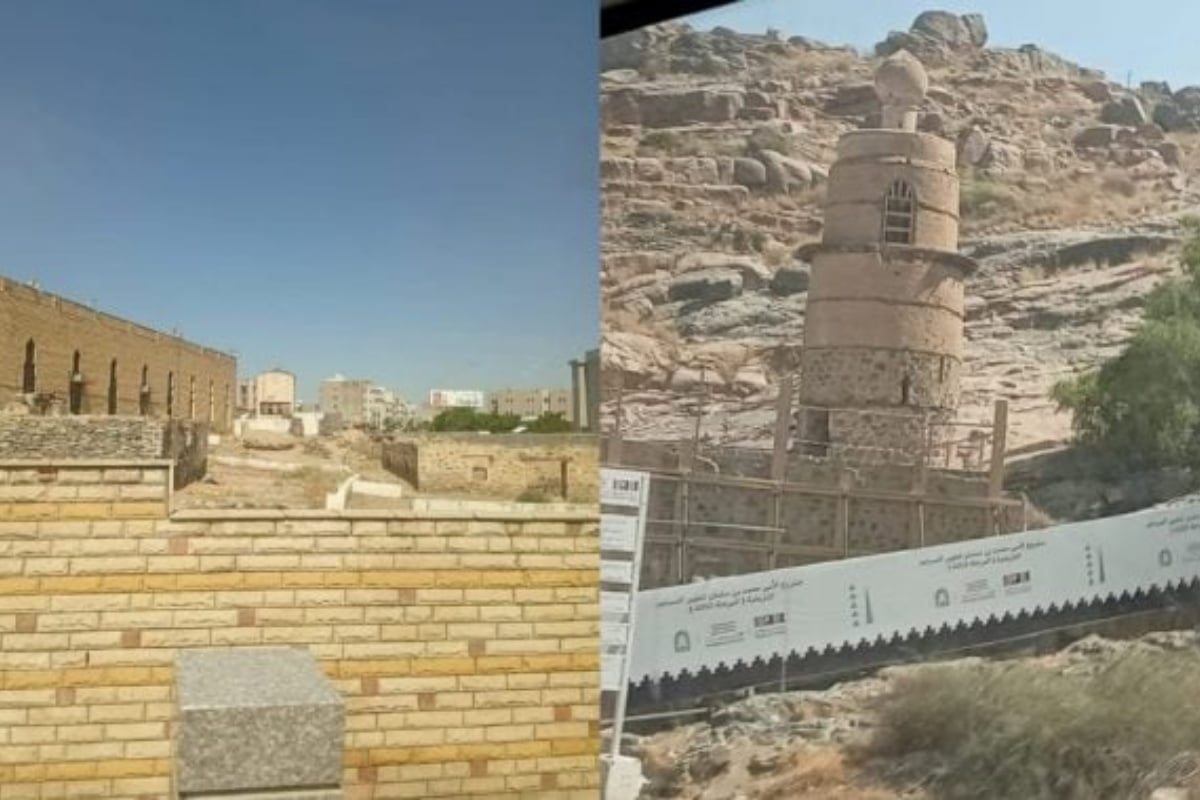A Sacred sign hidden in the holy Mountains of “Taif”

A Sacred sign hidden in the holy Mountains of “Taif”
Taif lies about 120 kilometres from Makkah. The city sits among mountains, fragrant flowers, and fertile gardens. It’s cool air, scented roses, and delicious fruits, pomegranates, grapes, and figs make Taif seem like an earthly paradise. The perfume made from Taif roses is not only a scent but a feeling that lifts the soul. This is also the city where a golden page of history is written: here, the greatest teacher of humanity, the Prophet of the two worlds, showed patience, steadfastness, and mercy, an example that became a guiding light for believers until the Day of Judgment.
We reached Taif by bus from Makkah and started our visit from Masjid Abbas, where Abdullah bin Abbas (RA) is buried. He was a great companion of the Prophet ﷺ and is called the heir of the Prophet’s knowledge and interpretation. As a child, the Prophet ﷺ embraced him and prayed for him. He is the son of the Prophet’s paternal uncle, Abbas bin Abdul Muttalib. Praying in this mosque brought peace to the soul and comfort to the heart.
After this visit, we walked toward Masjid Al-Ka‘ (also called Masjid Al-Mawqif) between the hills of Jabal Abu Zubaida. This is one of the oldest mosques in Islam. The mosque is square-shaped: its length is 8 metres and its width is 7 metres. It stands three metres high. The open courtyard is four metres wide and seven metres long. Inside the mosque, there is a small mihrab and a square window on one side. Two rectangular windows are on two walls. On the roof sits a small dome, 80 centimetres long and three metres high. This is the place where the Prophet ﷺ stayed for a short time during his journey to Taif. For this reason, it is also called Masjid Al-Mawqif.
Books tell that when the leaders of Makkah closed their ears to the call of truth, the Prophet ﷺ felt a deep pain in his heart and hoped to find someone who would answer the call of monotheism. With this hope, he went to Taif. The people of Taif welcomed this great guest with stones and insults. The Prophet’s blessed body was wounded, and he bled, yet no trace of a curse left the heart of the Prophet ﷺ. Tradition says that the people of Taif tried to roll a huge stone from the mountain onto the Prophet ﷺ. The Prophet ﷺ said, “If you are ordering by Allah’s command, then come; and if the people are doing this, then stop.” That stone remains there for fourteen hundred years as if nature itself testifies to the greatness of the Prophet of mercy ﷺ.
This was the prayer that became an immortal sign of patience and love. At that moment, divine mercy bent down to comfort the Beloved of Allah, Prophet Muhammad ﷺ. According to Sahih Bukhari and Muslim, the angel Jibril (Alayhis Salam) appeared and said that Allah had heard the Prophet’s plea. If the Prophet wished, Jibril would order the two mountain angels to crush the people of Taif by joining the two mountains together. The mountain angels (Malak al-Jibal) also came and said, “O Messenger of Allah, if you permit, I will bring these two mountains together so these people will be destroyed.” But the Prophet ﷺ replied, “No. Maybe their descendants will worship Allah.” These words are an eternal message to humanity: answer hatred with love, and answer cruelty with prayer. These are the weapons that win hearts.
The journey to Taif is a symbol of the spiritual journey: it has trials and sharp stones, yet the scent of faith remains. Taif teaches us that if stones fall on the path of preaching the truth, keep a smile on your face and a prayer in your heart. The one who prayed for mercy even for his enemies’ ﷺ expects his followers to change the world with love and patience.
Near Masjid Al-Ka‘the place where the Prophet of mercy stayed has been closed off by the Saudi government to preserve its sanctity. A clear notice forbids entry. But visitors who come for ziyarat often cross the fence to reach that place. Similarly, the area around the grave of Abdullah bin Abbas has been walled off, so visitors stand outside to recite Fatiha. Then they move toward the miqat to perform Umrah.
Wadi Taif lies outside the miqat, so coming to Makkah from there without Ihram is not correct. A dam (dam wajib) becomes obligatory, which means one must sacrifice at least a goat for the sake of Allah. The miqat for those coming from Taif is Qarn al-Manazil. Today there are two routes from Taif to Makkah: one route goes through “Al-Sail Al-Kabeer or Al-Sail As-Sagheer” and the other route goes through the area called Huda, which is considered miqat.
Read More News On
Catch all the Business News, Breaking News Event and Latest News Updates on The BOL News
Download The BOL News App to get the Daily News Update & Live News.